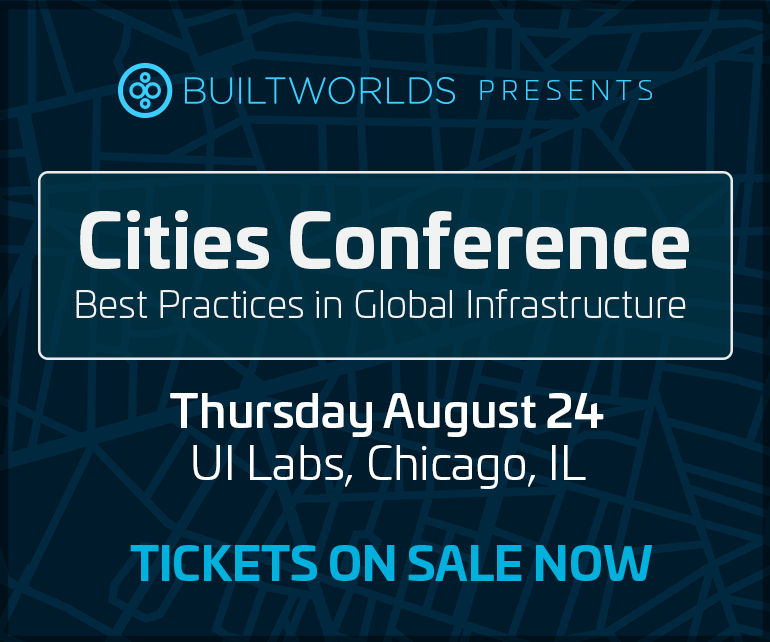Peter Ellis, founder of Peter Ellis New Cities, is a regular BuiltWorlds contributor.
We invite experts and thought leaders to share their knowledge on topics related to innovation in the built environment. Information on each contributor can be found at the bottom of each article. Learn more about our contributor program here.
Having been invited to moderate the BuiltWorlds Cities Conference on August 24, I thought I might share some initial thoughts about what we hope to achieve, from a high level.
(Stay tuned for Part 2 next week, where we’ll discuss the actionable insights we plan to take away from the event.)
This is an opportunity to examine what is happening now, and to discuss how we want to shape our cities in the future. Let me start with what is stirring right beneath our feet. The Chicago Riverwalk and the 606 are brilliant achievements in city building — green infrastructure that connects neighborhoods, provides among the best civic space in America, and have the power to transform the city. On Goose Island, where the Cities event will be held at UI Labs, a new live-work neighborhood is about to emerge and connect to both the Riverwalk and the 606.
BuiltWorlds covered the Riverwalk previously here.

South of the Loop beyond Roosevelt Road, the Related Companies are planning a 60-acre high-density neighborhood along the riverbank. A green infrastructure network that fuses nature, pedestrian, bicycle, along water and abandoned rail is threading through the city and providing the catalyst for urban transformation.
As an architect, I do like to imagine the great masterstroke, the all new city that points the way forward. But more often, the best neighborhoods are built piece by piece, the ultimate result unknown to each actor, where the whole greatly exceeds the sum of the parts.
The West Loop is a case in point.
Now emerging as one of America’s most vital urban neighborhoods, our industrial past, City of Big Shoulders Hog Butcher to the World, is now being recycled with innovative start ups, BuiltWorlds, amazing restaurants, not to mention corporate headquarters looking for the holy grail of commerce-talent-ideas.
Where are we going? At BuiltWorlds, we have discussed new technologies: renewable energy, micro-grids, battery storage, data analytics, robotics, 3-D printing, new mobility systems, innovative software. These are all happening now, and taken together, they will transform our world.
Yes, our cities are disrupt-able, but how do we want to disrupt them? What is our vision for our future? For example, when I imagine a city of driverless cars, I see a vibrant pedestrian-bicycle-autonomous vehicle sharing environment where green infrastructure infiltrates everywhere occupying abandoned parking lanes, parking lots, multi-story garages obsolete, converted to other use, or torn down for urban living.
Others dream of urban sprawl, the ever expanding ex-urb made possible by the autonomous capsule moving at greater distances at higher speeds while we work and sip cocktails in a virtual world. One person’s utopia is another person’s hell. How do you want to shape your world? As a nation, we understand the urgent need to rebuild our infrastructure, only if we could mend our political process. Beyond repairing our existing highways, bridges, rail, energy, water, and ports, what is the infrastructure for the 21st century and beyond. Elon Musk is leading the way in offering sustainable electric mobility connected to the sun. He is now proposing a hyper loop tunnel connecting New York and Washington in 27 minutes.
We are at a tipping point. A new urbanism and a new pattern of regional development throughout the United States is within our grasp.
About the Author



Discussion
Be the first to leave a comment.
You must be a member of the BuiltWorlds community to join the discussion.